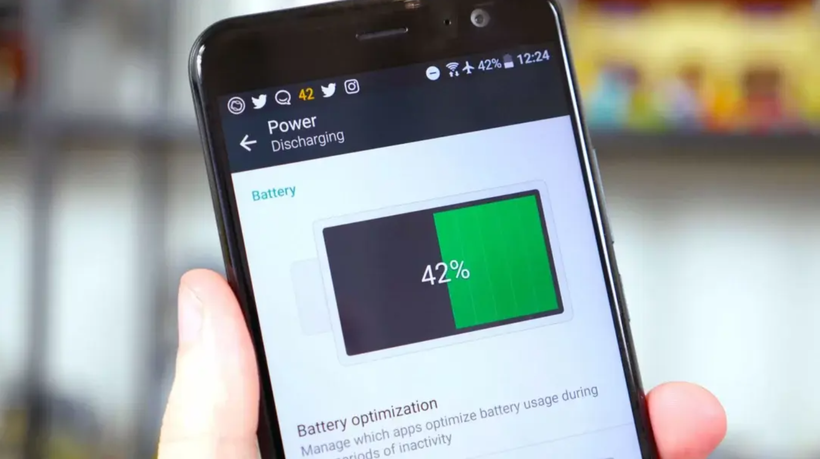
| Photo: Gezchina |
In today’s world, smartphones have become indispensable, used for communication, information and entertainment updates. With continuous use, the battery life of the device always becomes a concern for users. If you are an Android user and looking to extend usage time, the five methods below may help you.
Turn on the battery optimizer
The Adaptive Battery feature is available on smartphones running Android 12 and above, allowing user habits to be monitored and the battery allocated accordingly. This feature identifies the most frequently used apps and prioritizes power allocation, while reducing background activity for apps that are not accessed frequently.
To enable this feature, follow these general steps:
1. Open settings: Open the Settings app on your Android device.
2. Go to battery settings: Scroll down and find the “Battery” or “Battery & Device Care” option. Tap it to enter battery settings.
3. Look for battery optimization: Look for an option called “Battery Optimization” or something similar. It may be in a submenu like “Battery Optimization” or “Power Management.”
4. Enable battery optimization: Once you select Battery Optimization, turn it on to save battery life. Some devices may have different options such as Performance Mode and Adaptive Battery, in which case select Adaptive Battery.
5. Additional settings (if any): Some devices offer additional adaptive battery settings, such as “study” periods. Set these options if available to customize your preferences.
Stop apps that drain your battery
Many heavy programs can consume a lot of battery power, such as games, HD videos, or social networking apps that run in the background when not in use. Users can see which apps are consuming the most battery by entering Settings > Battery > battery usage, Select each app and put it to sleep. However, you should only use this method when necessary as it may cause you to miss important notifications from this app.
This way, applications that are not used frequently will be put to sleep. It is worth noting that some Android smartphones do this automatically. So you won’t have to do it manually.
Use dark mode
Many Android smartphones now use OLED displays. This technology emits light at the pixel level, meaning only the pixels that need to be illuminated are turned on, unlike an LCD display which illuminates the entire screen, even when only part of the screen is displaying the image.
When you use Dark Mode, the OLED screen illuminates fewer pixels, which in turn consumes less power. According to research by Purdue University (USA) published earlier this year, switching to dark mode on smartphones that use OLED displays can save up to 39% of battery life.
In addition to dark mode, users can also reduce the screen’s power consumption by lowering the brightness to a minimum. Turning on the Adaptive Brightness feature on the device helps the device automatically adjust the lighting depending on the environment instead of the user having to do it manually.
Here are some additional factors that can affect how well dark mode saves battery life:
- Screen brightness: The brighter the screen, the more power it consumes, regardless of whether you use dark mode or light mode.
- The type of application you are using: If you frequently use apps with a lot of white or bright elements, dark mode won’t save much battery power.
- Battery life: Old batteries are less efficient than new ones, so dark mode may not save as much battery power on older devices.
Disable unnecessary features
Smartphones offer a lot of features, but not all of them are essential for everyday use. Functions such as Bluetooth, Wi-Fi and GPS will consume power even when not in direct use. Therefore, you should consider turning off these features to save battery, such as turning off wifi when you go out, or turning off Bluetooth when not connected to any external device.
Besides, turning on a high screen refresh rate is also not necessary, as this feature consumes a lot of battery. Experts say that at the basic level, a scanning frequency of 60 Hz to 90 Hz is sufficient.
Additionally, turning on 5G also drains the battery faster. This mobile network has the advantage of speed and performance, but users will have to replace it with high power consumption, which may affect battery life. So, if you don’t need it or you’re not in the coverage area, you can turn off 5G.
Optimal positioning
Location services are important for navigation, for example apps need to use maps, but they also consume a lot of battery power. To improve the service, users can switch to HD mode. At this time, the service will be automatically optimized for each specific application.
If you don’t really need location services for any important tasks, you should turn off location services on your smartphone. Doing so will significantly extend your device’s battery life.
According to Gezhchina

